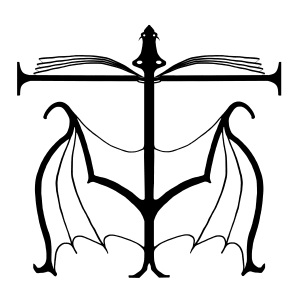Today is a weird happenstance that won’t happen again for 11 years. It’s Easter—it’s also April Fool’s Day. We’re looking for surprises—pranks or Easter Eggs, we’re on the lookout, on the hunt. But so are our readers, and it’s not a one-day-a-year thing for them.
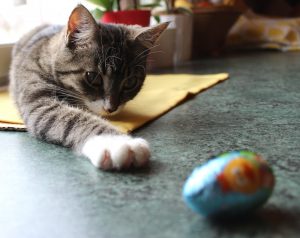
Surprise in Fiction
Readers like the unexpected—they like puzzles, they like to figure things out, they also like to be surprised by a plot turn they didn’t see coming—but that’s obvious. Properly executed experiences run from delightful to mind blowing for readers. Think back on some of your favorites. On my list: Ender’s Game by Orson Scott Card, The Man Who Used The Universe by Alan Dean Foster, and Telempath by Spider Robinson. I love that feeling where the whole world shifts—and what you are looking at whirls like a kaleidoscope into a new prismatic order. It’s a thing of perspective, of setup—ultimately, a matter of timing.

Reverse Engineering Your Timeline
There is a whole genre out there fueled by puzzles—Mystery. Mystery writers intimidated me for the longest time—that brilliant mastery of plot—how did they figure it all out before they started writing? When I tried to think up false leads, they always felt flat—even in my head. But some writers wrote engrossing, believable threats—murky mires that left you second-guessing things in the shower the next morning.

Then I saw the movie Clue—the one with the multitude of alternate endings. Suddenly things made more sense. I couldn’t write a false lead with heart, but what if you wrote it as if anyone could be—or maybe was—the real villain? Then you just pick the most interesting or strongest from the lot and muddy the waters around that one—obfuscate it a bit, tuck it in the background.
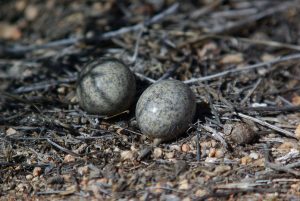
It made sense! Write the possibilities outwards, twist and turn in a wild briar-menagerie of possibility, then in revising, prune and push and pull, wire in place like a bonsai tree. Then make another pass and build in even more detail, plausibility, and possibilities. In some ways, a mystery is like a dating game with multiple competing potential paramours. You want to make all your suspects into rock stars of possible mayhem. Make your readers gnaw on their lip trying to decide who did it. Have fun.

Kill Bill
If you now just want more popcorn, here is your chance. Kill Bill is an excellent piece for authors to study due to its out-of-order scene presentation. Try watching the scenes in story order, and then in Tarantino’s—the out-of-order scenes increase both the mystery and the premise impact. While it’s definitely a special circumstance technique, it may open up new lines of exploration.

Constructing Clockwork
Gears turn and your world turns—it’s a powerful thing. While mysteries can grip me I usually don’t seek them out if there is nothing else going on. That’s the Science Fiction reader in me. I’ll enjoy Sherlock Holmes if I happen to read it—but it just doesn’t attract me sufficiently as a cold reader to pull me to that part of the bookstore. There is a special kind of variant though that grips my passion—transforming me into one of those feral bibliophiles who might garrote you just to silence distraction. Premise pivot stories.

It Is An Egg.
From A Shark…
Books which set up one set of expectations and then shatter them, reverse them, morph them into a different beast altogether. The books on my list above all do this to one degree or another. These books pose questions, they don’t always answer them.

No, That’s A Jellyfish…
A Jellyfish Toting More Eggs Than Any Bunny.
Ultimately, although premise pivot novels can appear much more complex than a traditional boilerplate mystery, I suspect constructing them is similar. You do need to be cognizant of the premise layer when writing, though. In addition to knowing your inciting incident, you need to know your inciting premise—you also need to know your concluding premise, and then figure out the best approach to pivot from one to the other. Just like in a traditional mystery you want to weave in additional plot and complexity. Premise-heavy books can risk coming off heavy-handed—complexity and ambiguity build out a world that will leave your readers room to think, and room to not see your pivot coming.

Donnie Darko

The discussion of reverse engineering your timeline and clockwork construction premise pivot stories leads rather inevitably to the superb film Donnie Darko. Plus, it features a character in a giant rabbit costume who foretells the precise end of the world—a peculiar Easter thematic element and a foreshadowing of things to come. It’s definitely one of those movies that demands an immediate re-watch to pick apart all the interconnections—so stock up on butter and popcorn and break out your notebook for plot dissection.
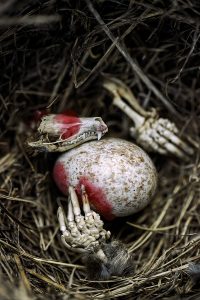
Harry Potter And The Prisoner of Azkaban (Spoilers)
My favorite Harry Potter book was the Prisoner of Azkaban. The plot’s use of time travel had a delightful clockwork logic to it that was counter-balanced with Harry’s inner conflict revolving around waiting to be saved by the adults, and finally stepping up to face his own fears and save himself. The Time Turner is an excellent use of a plot device to both effectively tie up Hermione’s bandwidth and prevent her from helping Harry through most of the book while also providing the ultimate solution—but only if he can overcome his denial and false hopes. I enjoy the pivot in perspective every time I re-read the story since it ties worldview and the character’s inner journey together so seamlessly in achieving a perfect interwoven balance.
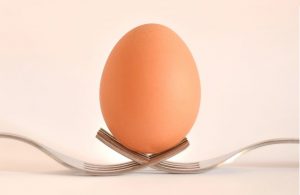
The Man From Earth
If you’ve never watched the film I’d tell you to stop reading right now and go watch it—but that might not be good advice, depending on your belief system. If you are of a less flexible bent and cleave to a traditional Christian doctrine, this isn’t likely to be comfortable cinema for you. But if you’re open minded then I highly recommend it. You’ll never think about college professors, cave men, or Easter in quite the same way again. Intrigued? There’s a reason watching this makes my fingers itch for my keyboard—leaving me all keyed up till I’ve written something subversive.

Weaving Loose Ends Into Whole Cloth

I’ve done sewing for years—costuming, alterations, embroidery, pattern making—give me a measuring tape and a calculator and I can make you a ball gown. Seamstresses don’t like loose threads. They look ugly, they snag on things and tear your garment, or unravel your seams. When you’re sewing, it’s not done till you’ve made a final pass and dealt with those dangling issues. In fact, a lot of effort in back stitching and knotting off your threads before you snip them is necessary to make sure everything doesn’t fall apart in the washing machine (or, worse, when you’re wearing it in public).
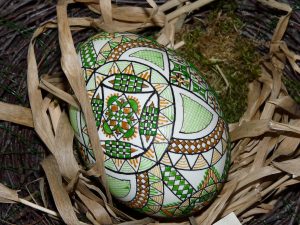
Writing is like sewing—when I figured out that loose threads were more or less the same in both crafts, I initially wanted to bite something (biting off threads is a habit that is hard to break). But then I figured out that while you do want to deal with your loose story threads, it’s both boring and a bit of a waste to just tie them off. Modern seamstresses usually just tie off as quickly as possible because our thread is cheap. Medieval seamstresses knew the cost of thread, and the hours that went into weaving it, all too well. They faced issues with dye lots—the next hank of green embroidery floss was unlikely to match and quite likely to clash. Back in Elizabethan times, much more thought went into using all of the available materials with creativity and thought to achieve the optimal results.

I’ve come to think like a medieval seamstress when dealing with loose story threads. How can I use them for maximum gain? Can I add interest? Can I build complexity? Can I make tie-ins to other themes or sub-plots? Five minutes of considering your options can make a nagging throw-away paragraph into a plot point that looks pre-planned, or—like the best of spontaneity—it can take your work to a new level. Surprise yourself and surprise your readers. Parchment came from sheepskin, often split by a sharp knife into multiple thin sheets. Where the knife slipped, or the skin was just too thin, holes would occur in some of the layers—but parchment was much too valuable to waste just because it had a hole. It would still be used, even for expensive illuminated texts.

Rather than ignoring the flaw, some scribes would ornament it, work it into an illustration, or wreathe it in knotwork. Think like a scribe—embrace your flaws and make them highlights. If you make a slip of the knife when removing the shell, then go all the way.
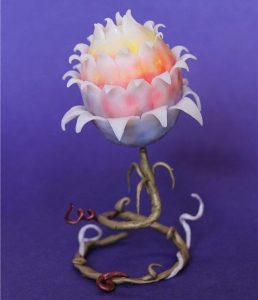
Hidden Treasures Big & Small—Easter Eggs In Writing

If your novel is currently devoid of Mystery—and the earlier discussion of Mystery plot felt like something you’ll have to wait to explore till another book (or avoid altogether since business sense advises to stick to one genre) don’t worry. While an entire story engine can be Mystery fueled, or you might just be bolstering your Romance novel with a Mystery sub-plot, there is no reason you can’t have smaller scale Mystery nuggets buried throughout your book, even if the book itself is otherwise a pure Western, or a Thriller, or Epic Fantasy.

There is a kind of conglomerate rock called puddingstone, a fine-grained sedimentary stone interrupted by what look like rounded river rocks randomly embedded in its matrix, like tapioca pudding. Likewise, you can inject standalone snippets of surprise into your work with Easter Eggs, capitalizing on that puzzle payoff in a paragraph or even a line. Mystery is very elastic in scale—and the joy you can bring your readers in just a few sentences tucked away here or there can far outweigh the word count or time you invested. While you certainly can pre-plan your Easter Eggs and even foreshadow them, they actually lend themselves quite well to being worked in as the mood strikes you in later drafts. The contrast and unexpectedness of the switch is part of their charm.

Ready Player One (Potential Spoilers)
I recently finished reading Ready Player One, by Ernest Cline. It is a fabulous book rife with 1980’s pop culture—the premise of the book is in fact a trivia based hunt for an Easter Egg hidden in a virtual world. The theatrical release date of the new film was this Thursday 3/29/2018 as we headed into Easter weekend. Easter Eggs, Easter Weekend, Easter falling on April Fool’s Day. Genius marketing.

The book captured the joyous nostalgia of specific shows, songs, games, commercials and other lore lifted from the 80’s. It also hooked into the delight of discovering jewels from the past, even if it was before my time—and the nerd-cred of knowing details even your peer geeks don’t know.

But mostly it was a celebration of loving things—and a validation of valuation for what brings a smile to your face, regardless of if the rest of the world has forgotten jelly shoes and holographic slap bracelets. It’s an invitation to let your idiosyncratic flag fly high and discover your own community of like-minded niche nerds. Once upon a time we were ostracized, but—even if decades late—we finally found our nest.

I grew up in the 80’s without much exposure to pop culture—I couldn’t watch anything but PBS and felt left out of my classmates’ discussions on pretty much everything but math and science. But reading Ready Player One, I was shocked about how much I did remember—or was exposed to and excited by a decade after others had enjoyed it. I finally felt validated as a child of the 1980’s in a way I never felt growing up in the 80’s—that’s the power of Easter Eggs. They can change the way your readers think of themselves.

Know Your Peeps
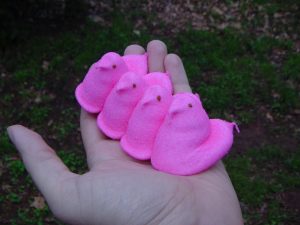
Know yourself and know your peeps. What delights you? What delights them?

What nooks and crannies exist in your work where you can tuck more of those things? Can you excavate additional niches? English cottage gardens are beloved for their apparent wildness—little flowers, mosses, and ferns grow in tiny crannies in the stacked field-stone walls that edge the cottage yards. Those micro-glens aren’t happenstance.

English gardeners look for openings, lovingly trowel in potting soil, and seed them with care. If their wall was too well constructed by artisans of yore, they’ll pull rocks out to make way for buttercups. Your novel is your garden—make a wish-list, you can bring it to bloom.

Your Easter Basket

This Easter, go look in your own basket brimming with glittering foil-wrapped chocolate goodies, your own personal idiosyncratic joys—go ahead, gloat. I can’t wait to see what you make of it—after, all I’m a hungry reader too—I need you to hatch the unexpected and tuck it away here and there in books for me to devour. The bookstore is our hunting ground—let’s make sure it’s stocked with Cadbury Eggs, Wonka’s Golden Eggs—and Fabergé eggs… The hunt is on.

But as writers we do not hunt alone. If you find eggs you love, your readers will, too. We all win here—so let’s celebrate!


